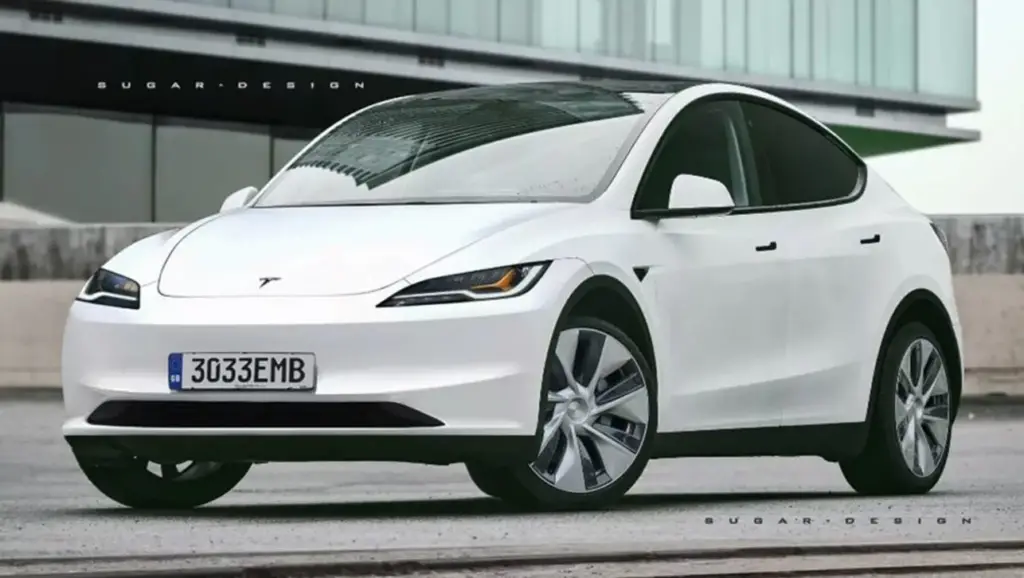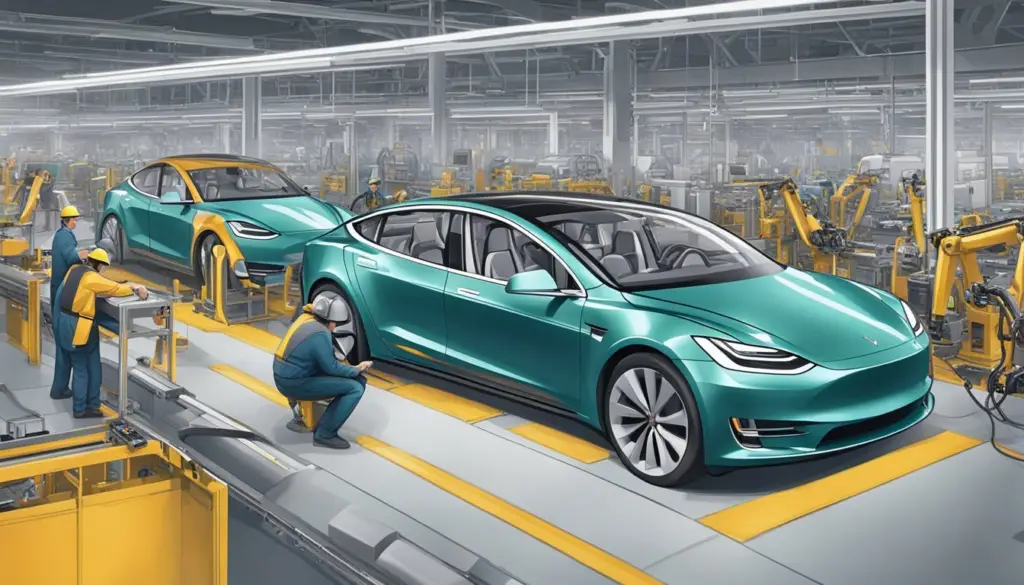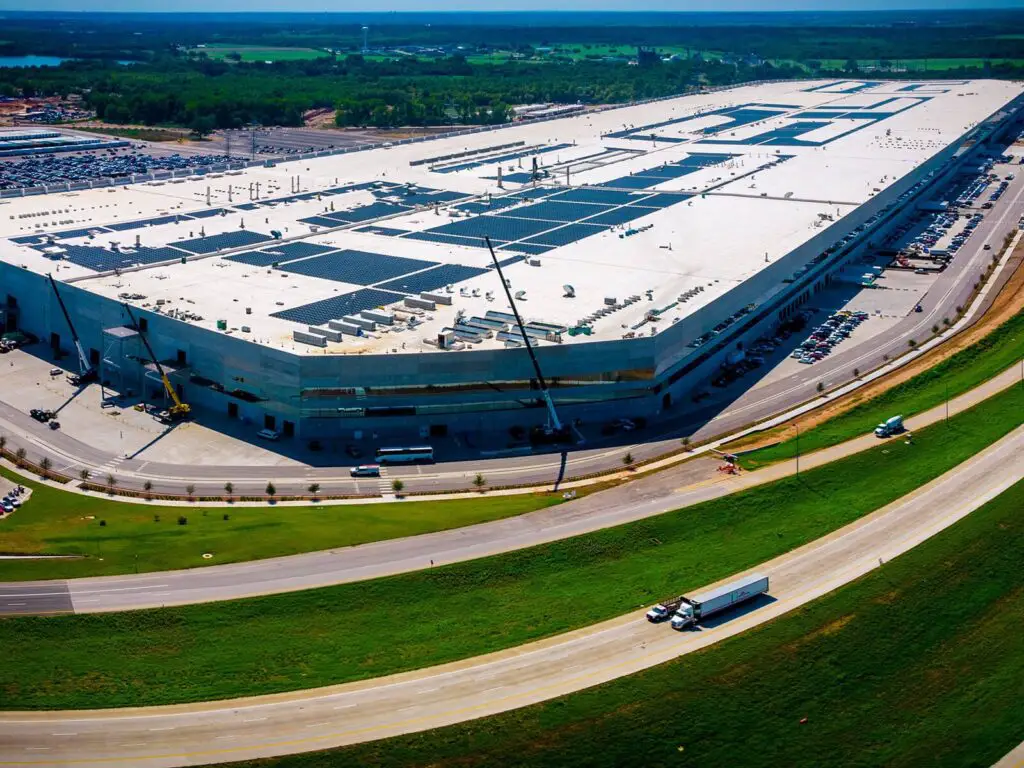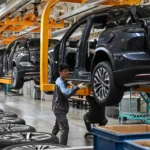Tesla has been making impressive strides in scaling up production at its Gigafactory in Texas, now reaching impressive numbers in vehicle output on a weekly basis.
The company has gone beyond its initial Model Y Standard Range and has added the Model Y Long Range to the production mix, signaling a significant expansion in both capacity and product offerings. This move further strengthens Tesla’s position as a leader in electric vehicle (EV) manufacturing, with Gigafactory Texas playing a pivotal role in Tesla’s future growth strategy.

Despite these advances, Tesla has remained rather secretive about the specifics of the factory’s production ramp-up. This secrecy is understandable, considering that the success of this $5 billion factory is crucial to Tesla’s financial future. The company is investing heavily, but it won’t see a return on that investment until production reaches full throttle.
From Humble Beginnings to Scaling Up
When Gigafactory Texas first began production in late 2021, Tesla faced a number of challenges as it sought to build its Model Y vehicles using the 4680 battery cells and the structural battery pack. While these innovations promise greater efficiency and performance, they have also been a source of bottlenecks, delaying the factory’s ability to ramp up its output quickly. Nevertheless, Tesla has made significant progress, gradually increasing production over the months.
By April of the following year, deliveries of Texas-made Model Ys were officially underway. However, even as production increased, Tesla struggled with scaling up at a faster pace due to the challenges associated with the new battery technology. The company’s initial goal for the end of 2023 was to reach 10,000 vehicles per week, an ambitious target that would require overcoming several obstacles.
Despite some internal uncertainties about the current production rate, the factory’s progress has been closely monitored. Early estimates suggested that Gigafactory Texas was producing fewer than 1,000 vehicles per week. However, inside sources recently provided some clarity on the factory’s actual output, showing substantial progress that paints a promising picture for the factory’s future.
Expansion of Model Y Variants
One of the major drivers behind the ramp-up in production has been the addition of the Model Y Long Range variant to the factory’s production line. This new version of the popular electric vehicle has allowed Tesla to increase its output significantly. According to sources familiar with the operations, Gigafactory Texas is now capable of producing several thousand Model Ys each week, a notable improvement over its earlier output.
Production Milestones and Projections
Some sources report that the factory is now producing up to 5,000 vehicles per week, a figure that would be extraordinary given the factory’s relatively short time in operation. However, there is some uncertainty about whether this output can be sustained in the long term. Tesla’s ability to maintain or increase production rates will depend on a range of factors, including battery supply and assembly line efficiency.

Other sources have noted that Tesla’s production capacity is likely closer to 2,000 vehicles per week, especially since the introduction of the Model Y Long Range. While this figure is lower than the more optimistic projections, it still represents a significant improvement over earlier estimates.
As production numbers fluctuate, there are signs that Tesla is starting to gain more traction with its 4680 battery cells. These new cells are critical for achieving the desired efficiency and cost-effectiveness in Tesla’s vehicles, but scaling up production of this technology has proven to be a significant challenge. The current production of the Model Y Long Range, which is not yet utilizing the new 4680 cells, has been seen by some observers as a temporary workaround. In fact, some buyers have reported that their Model Y Long Range vehicles are still being equipped with 2170 cells, which were used in earlier models, rather than the new 4680 cells.
This has raised questions about whether Tesla can truly transition to the 4680 battery cell in the short term. Given the scale of investment in this new technology, the company is eager to ensure that the transition happens smoothly and without any disruption to its production capabilities.
Visual Evidence of Production Progress
Recent drone flyovers of Gigafactory Texas, particularly one by Joe Tegtmeyer on June 27, captured the impressive scale of production. More than 300 Model Ys were visible in the factory’s parking lot, awaiting delivery. This visual evidence underscores the progress Tesla has made in scaling up its operations, even if the company remains tight-lipped about exact production figures.
For those observing Tesla’s production ramp, the sheer scale of activity at Gigafactory Texas has been astonishing. Tesla is not just producing cars; it is positioning itself for the future of the electric vehicle market. The rapid assembly of vehicles is a testament to the company’s commitment to building out the necessary infrastructure to meet future demand.
Assessing the Future of Gigafactory Texas
Is 5,000 Vehicles Per Week Sustainable?
While achieving a production rate of 5,000 vehicles per week is a remarkable achievement for a factory that only began full-scale operations a few months prior, there are still important questions regarding the long-term sustainability of this rate. For Tesla to meet its broader goals of global leadership in EV manufacturing, it will need to ensure that production ramps up smoothly without sacrificing quality or efficiency.
Tesla’s Long-Term Vision for Battery Innovation
One of the critical factors that will determine the future success of Gigafactory Texas is its ability to scale production of the 4680 battery cells. As Tesla has demonstrated, innovation in battery technology is central to the company’s strategy, and the 4680 cells are expected to provide higher energy density, improved cost efficiency, and greater structural integration with the vehicle.
However, transitioning from the older 2170 cells to the newer 4680 format has proven challenging. While some vehicles are still being delivered with 2170 cells, Tesla will need to accelerate production of the new cells to meet future demand and maintain its competitive edge.

Tesla’s Gigafactory Texas: A Key to the Future
The story of Gigafactory Texas is one of ambition, innovation, and persistence. Tesla’s strategy of creating a vertically integrated supply chain — from battery production to vehicle assembly — is central to its long-term vision of reshaping the automotive industry.
As Tesla continues to scale up production at Gigafactory Texas, it will be crucial for the company to address the remaining bottlenecks, particularly around battery cell production. With its 4680 cells at the heart of its future plans, Tesla is betting on the successful implementation of this technology to secure its position as a leader in the electric vehicle and clean energy markets.
The Road Ahead: Overcoming Challenges
Despite the challenges that lie ahead, Tesla’s success at Gigafactory Texas will be measured not just by its weekly production output, but by its ability to sustain and scale these operations over time. As the company continues to innovate in areas such as autonomous driving, battery technology, and supply chain optimization, Gigafactory Texas will play an essential role in realizing these ambitions.
In conclusion, Gigafactory Texas is a testament to Tesla’s unwavering commitment to revolutionizing the future of transportation. While there are hurdles to overcome, the progress made in such a short time is a testament to the company’s resilience and ambition. With continued investment in cutting-edge technology, strategic scaling, and a relentless drive for improvement, Tesla is well on its way to achieving the grand vision it has set for itself at Gigafactory Texas.
Key Takeaways:
| Key Focus | Details |
|---|---|
| Production Rate | Reaching up to 5,000 vehicles per week, with varying sustainability |
| Battery Technology | Transitioning from 2170 to 4680 cells for greater efficiency |
| Factory Scale | Significant output, with 300+ vehicles seen daily |
| Long-Term Outlook | Focus on increasing 4680 cell production for sustainability |
| Key Challenge | Overcoming bottlenecks in battery cell manufacturing |



